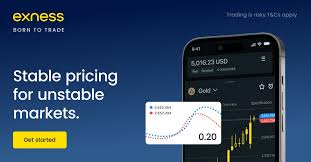
The Ultimate Guide to the Best Forex Trading Strategy
In the fast-paced world of forex trading, finding the right strategy can mean the difference between success and failure. Whether you are a seasoned trader or a newbie just starting out, understanding the best forex trading strategy is crucial. In this article, we will delve deep into various trading strategies that can help you navigate the complexities of the forex market. You can find more resources on forex trading at best forex trading strategy https://forex-vietnam.net/.
Understanding Forex Trading
Foreign exchange trading, or forex trading, involves buying and selling currency pairs, with the aim of making a profit. Unlike other financial markets, the forex market operates 24 hours a day, five days a week, providing traders with ample opportunities. However, this also means that the market can be volatile and unpredictable. To succeed, traders need a well-defined trading strategy.
Common Forex Trading Strategies
There are several common strategies employed by forex traders worldwide. Each strategy has its own benefits and drawbacks, and the best one for you will depend on your trading style, risk tolerance, and market conditions. Here are some of the most popular trading strategies:
1. Scalping
Scalping involves making many small trades throughout the day to capitalize on minor price movements. Scalpers aim to make quick profits by holding positions for a very short duration. This strategy requires a strict exit strategy and a lot of discipline. Scalping is not for everyone, as it can be stressful and requires continuous monitoring of the markets.
2. Day Trading
Day trading is a strategy where traders buy and sell currencies within the same trading day. This helps to avoid overnight risks associated with holding positions. Day traders look for short-term opportunities and typically use technical analysis to create their trading plans. This strategy can be rewarding but requires a solid understanding of market movements.
3. Swing Trading
Swing trading is a medium-term strategy that aims to profit from price swings in the market. Traders hold positions for several days to weeks, looking to capitalize on higher prices. This strategy is less stressful than scalping or day trading, as it allows for more time to analyze market trends and reduce the number of trades made.
4. Position Trading
This long-term trading strategy involves holding a position for several weeks, months, or even years. Position traders typically make decisions based on fundamental analysis and broader economic indicators rather than short-term market movements. This strategy requires patience and a deep understanding of market forces.
Key Components of a Successful Forex Trading Strategy

Regardless of the specific strategy you choose, there are key components that should be a part of any successful forex trading plan:
1. Risk Management
Effective risk management is crucial in forex trading. Traders should determine how much of their capital they are willing to risk on a single trade and set stop-loss orders to limit potential losses. A common rule of thumb is to risk no more than 1-2% of your trading capital on a single trade.
2. Trading Plan
A solid trading plan outlines your trading goals, strategies, and the criteria for entering and exiting trades. It acts as a roadmap to help you stay focused and disciplined during trading sessions.
3. Fundamental and Technical Analysis
Both fundamental and technical analysis are vital tools in forex trading. Fundamental analysis involves analyzing economic indicators, news events, and other factors that can influence currency prices. On the other hand, technical analysis uses historical price data and charts to identify trends and patterns that can inform trading decisions.
Choosing the Right Trading Platform
The trading platform you choose can significantly impact your trading experience. Look for a platform that offers user-friendly features, real-time data, robust security, and a comprehensive range of trading tools. Many brokers also provide demo accounts, which are great for practicing your trading strategies without the risk of losing real money.
Mindset and Psychology in Trading
A trader’s mindset and psychology can make or break their trading success. Emotional trading, driven by fear or greed, often leads to poor decision-making. Successful traders cultivate discipline, patience, and the ability to stay detached from their trades. Keeping a trading journal can also be beneficial, as it allows you to review your decisions and learn from past mistakes.
Staying Updated with Market Trends
Staying informed about market trends and economic news is essential for any forex trader. Regularly follow financial news, market reports, and economic calendars to keep abreast of developments that may impact currency prices. This knowledge will aid you in making informed trading decisions.
Conclusion
Finding the best forex trading strategy is not a one-size-fits-all approach. It requires careful consideration of your individual objectives, risk tolerance, and market conditions. By embracing a disciplined approach to trading and continually refining your strategies, you can enhance your ability to navigate the forex market successfully. Remember, education is key, so continue to learn and adapt as you grow as a trader.





